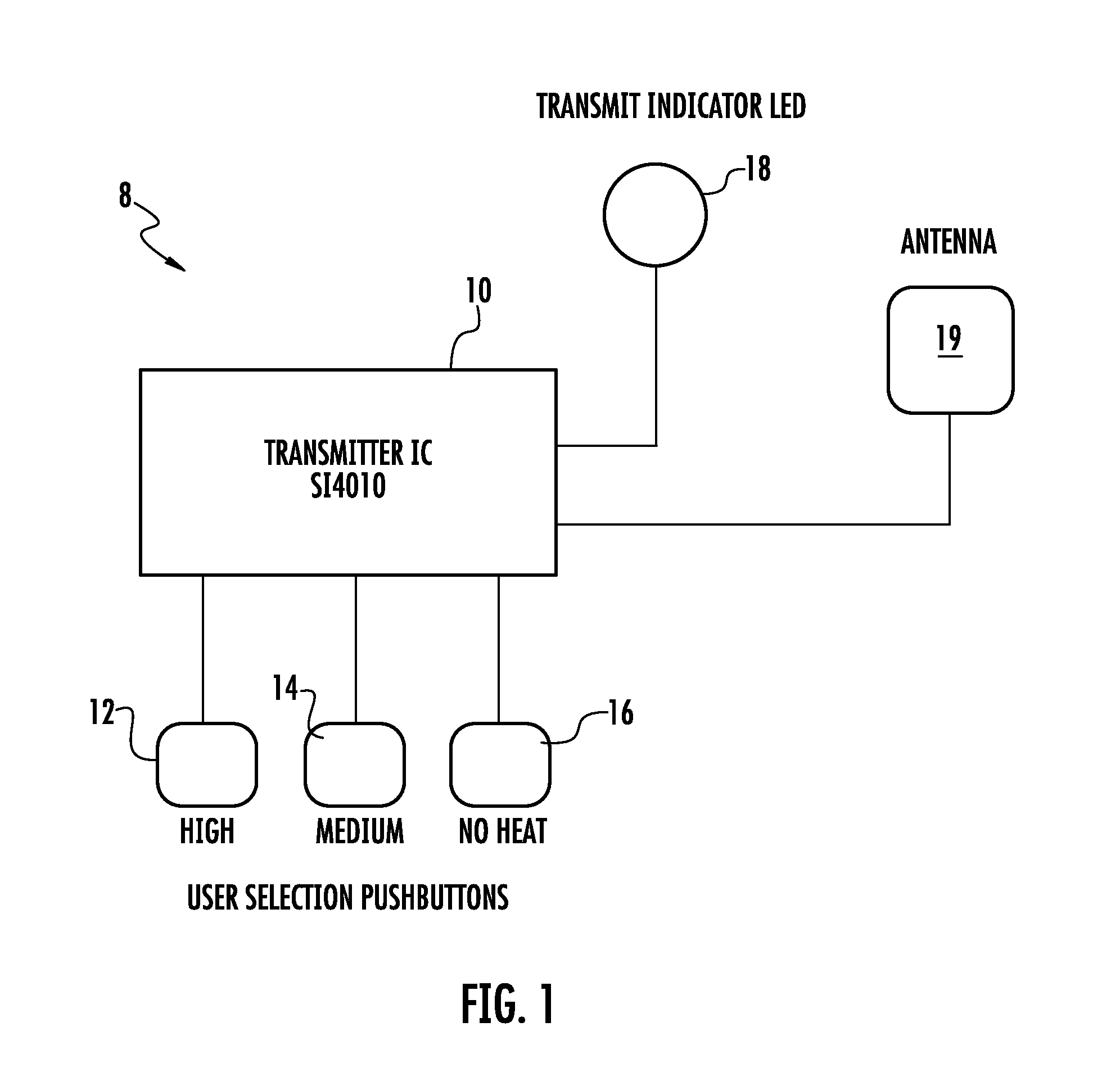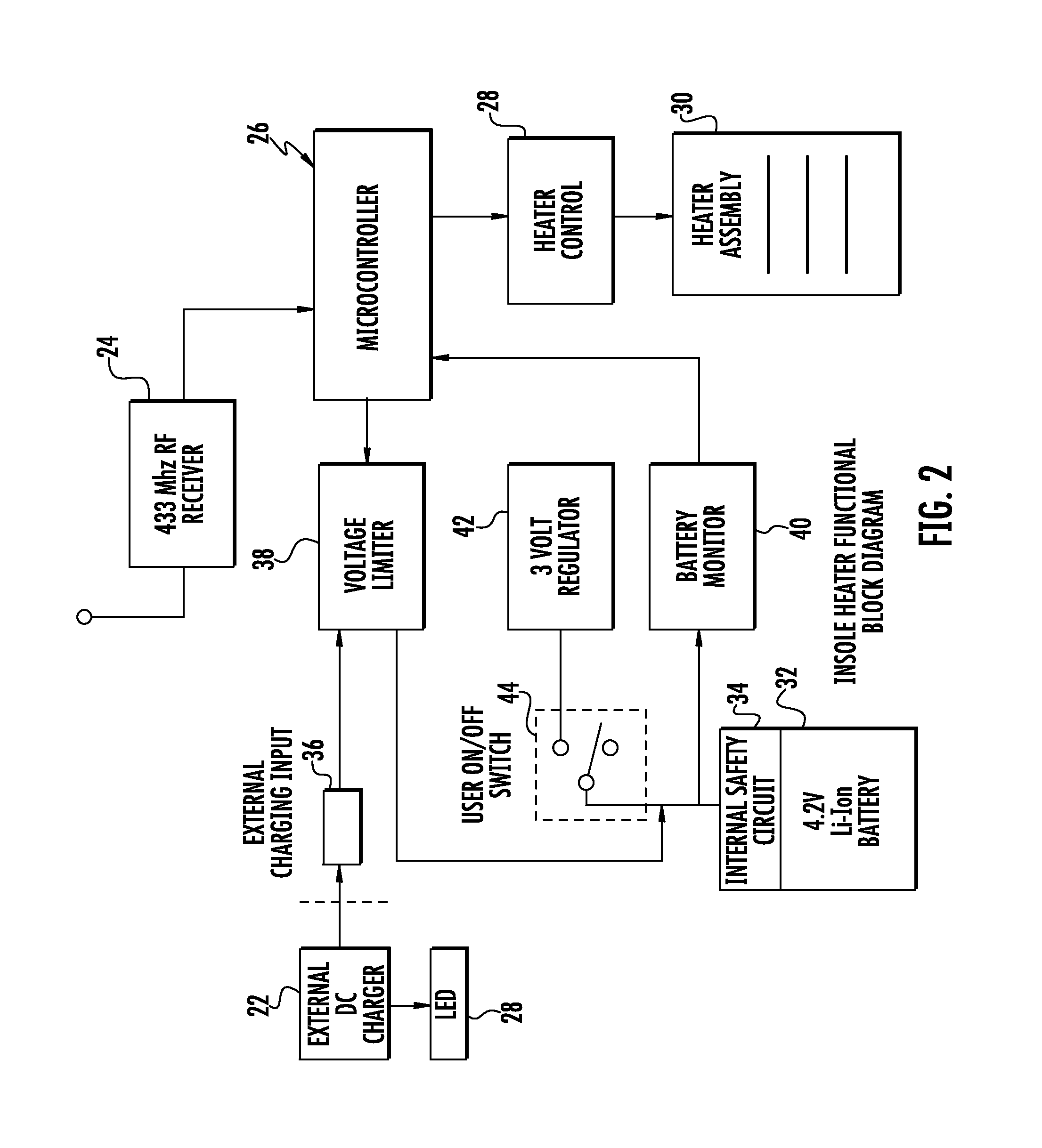Heated insole remote control systems
a remote control system and heated insole technology, applied in the field of remote control of heated insoles, can solve the problems of increasing risk or injury, affecting the effect of the temperature of the insole, and consuming time in the process, so as to improve the ability to achieve desired temperatures and keep the rest of the body warm
- Summary
- Abstract
- Description
- Claims
- Application Information
AI Technical Summary
Benefits of technology
Problems solved by technology
Method used
Image
Examples
Embodiment Construction
[0022]FIG. 1 is a block diagram showing the transmitter 10 of this invention. The transmitter comprises an integrated circuit S14010 which is connected to a plurality of push buttons 12, 14 and 16. The push buttons generate signals to cause high, medium and no heat conditions, respectively, to be generated within the insole. The user selects a push button to be activated in order to control the temperature within the insole.
[0023]An LED 18 may be connected to the transmitter to indicate that the transmitter is transmitting and / or to indicate that the transmitter is on and capable of transmitting. An antenna 19 connected to the transmitter wirelessly transmits electronic signals generated in transmitter 10 to the electrical circuit within the insole.
[0024]The transmitter 10 decodes the user command by determining which of the push buttons is selected, and the transmitter provides a burst of four packets of information or electrical signals with each packet consisting of an address an...
PUM
 Login to View More
Login to View More Abstract
Description
Claims
Application Information
 Login to View More
Login to View More - R&D
- Intellectual Property
- Life Sciences
- Materials
- Tech Scout
- Unparalleled Data Quality
- Higher Quality Content
- 60% Fewer Hallucinations
Browse by: Latest US Patents, China's latest patents, Technical Efficacy Thesaurus, Application Domain, Technology Topic, Popular Technical Reports.
© 2025 PatSnap. All rights reserved.Legal|Privacy policy|Modern Slavery Act Transparency Statement|Sitemap|About US| Contact US: help@patsnap.com



